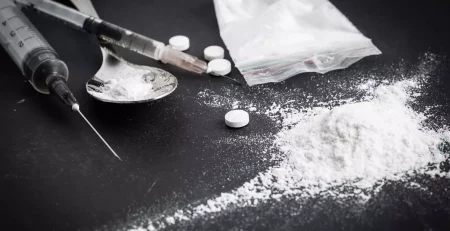Cocaine Comedown
Understanding the Cocaine Crash and How to Overcome It
It’s a given that most chemical substances that cause drug abuse and disorders have an extremely negative impact. Finding one item people use as crutches for addiction that doesn’t have detrimental consequences is impossible – even substances like marijuana that are considered socially acceptable.
However, certain substances have more severe side effects and consequences than others, each originating from different places. For example, one of the most severe consequences of having an opioid disorder is the withdrawal that comes with detox. There are far more negative side effects than this, but withdrawal is considered one of the worst consequences to deal with.
In terms of cocaine use, the ‘cocaine comedown’ is a form of withdrawal that can be both physically draining and psychologically dangerous.
Keep reading to learn more about how the crash from cocaine gives rise to dangerous withdrawal symptoms, and how to overcome the comedown and get effective help to ensure it does not happen again!
The Rather Serious Side Effects of Cocaine

One consequence of cocaine addiction is the psychosis that can come with heavy use. We could continue with a list of each drug, as they all have unique side effects and symptoms that ultimately make them all undesirable.
But we will stay focused on cocaine and its many side effects for the purpose of our resource today.
Cocaine carries one of the most undesirable side effects for most people who abuse this drug. This side effect leads to the initial stages of addiction for cocaine users, whether their method of administration is smoking freebase or crack, snorting cocaine, or injecting it in liquid form.
What Goes Up, Must Come Down
The cocaine comedown (or crash) is a storied cocaine side effect that most people hear about regardless of whether they use the drug or not. However, if you’ve never been close to someone immediately using it or never used it yourself, it’s difficult to grasp how impactful the cocaine comedown can be.
Consider the following for a moment: Most people continuously use cocaine to avoid the crash or cocaine comedown. Now try to fathom how powerful the cocaine comedown would make users go to great lengths to avoid this feeling.
In this article, we will dive a little deeper into the cocaine comedown symptoms, how a user’s behavior and habits affect it, and how it can be remedied.
Get Immediate Help For Cocaine at Icarus!
What Are the Typical Effects of Cocaine?
Cocaine is a stimulant in powder or solid form that’s abused in multiple ways. The following list is the preferred methods of administration for individuals who use cocaine:
- Cocaine comes in compressed kilograms or “bricks.” These compressed bricks feel like solid rock, but when smashed and broken down, they turn into a white powder. This white powder is crushed and cut into lines for users to insufflate or sniff. When users choose this method of administration, the effects are usually present within two to three minutes. The high builds in intensity for about 10-15 minutes until users hit the peak, which lasts for another 15-20 minutes until the comedown begins.
- Smoking cocaine or crack cocaine requires using a pipe and burning the solid form of the drug (crack is made using a cooking method involving cocaine and baking soda). The effects of this method are felt almost instantly and are incredibly intense. However, they’re also short-lived. Users feel a fast, intense rush of euphoria that begins to decline in about five to ten minutes. Because of this short-lived high, users continuously smoke crack until they’re out of money, chasing this short high to avoid the cocaine comedown.
- Users can mix powder cocaine with water to break it down into a clear oil used for injecting. Injecting cocaine is the most intense method of administration and is felt immediately. The high from injecting lasts for about 15 minutes before fading away, leading to users continuously injecting the drug.
Overall, the effects of cocaine include:
- Euphoria
- Increased heart rate
- A “rush” feeling
- Intense joy
- False sense of confidence
- Inflated self-image
- Inflated feeling of importance
- Mood swing
- Increased blood pressure
Who Suffers Most from a Cocaine Comedown?
Anyone who abuses cocaine in any fashion suffers from a cocaine comedown. However, users who have a cocaine addiction or dependence suffer the most from cocaine comedown symptoms.
The longer someone abuses cocaine, the more their body and minds get used to the presence of the drug in their systems. Eventually, the high is replaced by a need for the drug to feel normal.
What initially begins as users chasing that initial high, they first experienced turns into a frantic dash to avoid the cocaine comedown. Ultimately, this motivation to avoid the crash that is the cocaine comedown will become the primary motivation for using the drug.
How can you tell when someone is experiencing cocaine withdrawal or a severe comedown?
What Are the Signs of a Cocaine Comedown?

The signs of a cocaine comedown are not challenging to identify, especially if you’ve been close to someone with cocaine abuse disorder or experienced this event yourself. Many physical and psychological symptoms come up during the coke crash.
If you suspect that someone you love is using cocaine, it is essential to be aware of the following signs of a cocaine comedown:
- Restlessness
- Mood swing
- Flushed, red face
- Intense sweating in the early stages
- Shaking
- Teeth and jaw grinding from cocaine
- Anger issues
- Depression
- Misdirected hostility
- Psychosis
- Violent outbursts
- And more
The cocaine comedown timeline is the window in which the comedown process unfolds. In the next section, we will outline this timeline.
A Typical Cocaine Comedown Timeline
The cocaine comedown timeline varies depending on how much cocaine the user ingested, how long they’ve been using it, how pure the product is, and the method of administration.
However, this is an accurate general idea you can use to approach the same type of situation.
10-15 Minutes
10-15 minutes after ingesting, the user will begin to crave the next dose. As the most intense portion of the high begins to decline, their thoughts will gravitate toward the following line or hit. This is known as a “jones,” or an intense craving for the next dose of cocaine. Users may also grind their jaws or teeth together, which ends up causing long-term damage in most cases.
30-45 Minutes
The user may visually and verbally display signs of the cocaine comedown. Their anxiety intensifies, and their thoughts are entirely dominated by the urge to get high.
The users’ restlessness is apparent, and they may pace the floors or do a similar activity such as tapping their foot or fingers or any other nervous tick. They typically become highly frustrated and may even have violent outbursts.
1-2 Hours
The effects of the previous cocaine use have entirely worn down, and the user is experiencing the full impact of the cocaine comedown. During this time, depression ensues, anxiety is at its worst, and the user may begin to feel tired. This is usually the last stage before the user falls asleep, especially after being up for several days.
Up to 100% of Treatment Costs Covered by Insurance
Cocaine Jaw and Bruxism in Cocaine Users
Bruxism is a condition that causes patients who have it to clench and grind their jaws. This clenching and grinding typically occur at night while the individuals are sleeping.
However, when it comes to cocaine users, this usually takes place while the user is high on cocaine or when they are experiencing a cocaine comedown.
Typically, the longer the comedown takes, the more intense the jaw grinding becomes. Over time, this causes significant damage to the jaw bones, structure, and teeth. Cocaine can also accelerate hair loss, a side effect that while minimal, can be a compelling reason for some users to seek treatment.
The user is wearing down their teeth and jaw bones over a long period. Each time they grind their teeth, small pieces of tooth and tooth enamel are eroded and chipped away until irreversible damage is done. In severe cases, the individual will likely need dentures, as any chances of repair are out of the question because of the extent of the damage.

How Can Cocaine Binges Be Treated Effectively?
Cocaine binges can be treated effectively by participating in therapy that helps the client not go through a cocaine binge. A user who goes through sporadic cocaine binges usually is a red flag that indicates full-blown dependence is either already present or right around the corner.
Finding a form of a treatment center, like the programs of Icarus Behavioral Health, that uses holistic methods is the most appropriate course of action. These professional services allow full-blown dependence to be avoided before the situation becomes more severe.
At Icarus, our licensed programs for cocaine addiction treatment also form a valuable resource for those in need of an inpatient rehab setting, which offers our most supportive treatment environment.
5 Tips to Recover from Too Much Cocaine the Night Before
Recovering from using too much cocaine consumption the night before may help a user feel better temporarily, but it does little for the big picture of drug addiction and the issue of substance abuse.
However, there are specific methods one may employ to eliminate some of the adverse effects resulting from a cocaine binge. The following list of steps may provide relief from cocaine withdrawal symptoms, from a cocaine binge:
- A dose of Tylenol or Ibuprofen, with at least a small amount of food in your stomach before taking either.
- Large amounts of fluids and electrolytes. Start with water, then slowly add Gatorade or something similar
- A cold shower or a cold environment may also provide substantial relief. Cocaine hangovers increase body temperature and anxiety, and cold water may regulate these symptoms.
- Taking Benadryl may help the user to avoid feelings of anxiety. Don’t take a total dose; try half of a pill to see how it affects you.
- Some form of nose spray may help with clogged sinuses, be aware that this can compound the damage done to your nasal passages, however.
Get Effective Cocaine Detox and Rehab at Icarus
Using a Cocaine Crash and Cocaine Hangover to Get Sober
If you are experiencing withdrawal symptoms from a cocaine crash or hangover currently or have recently experienced either of these events, use them as a driving force to promote change. Consider how you feel and use it for fuel to motivate yourself never to experience these feelings again.
Do you believe that your recreational use is getting out of hand? Do you already feel you have an issue with cocaine abuse? Don’t wait any longer – contact a member of our Admissions team today so we can help you get back on the right track.
At Icarus in New Mexico, we have multiple forms of treatment that can help you cope with cocaine abuse disorder, mental health, and any feelings you might be dealing with. Contact us today and experience client-centered care that understands how to get you on the road to recovery!











